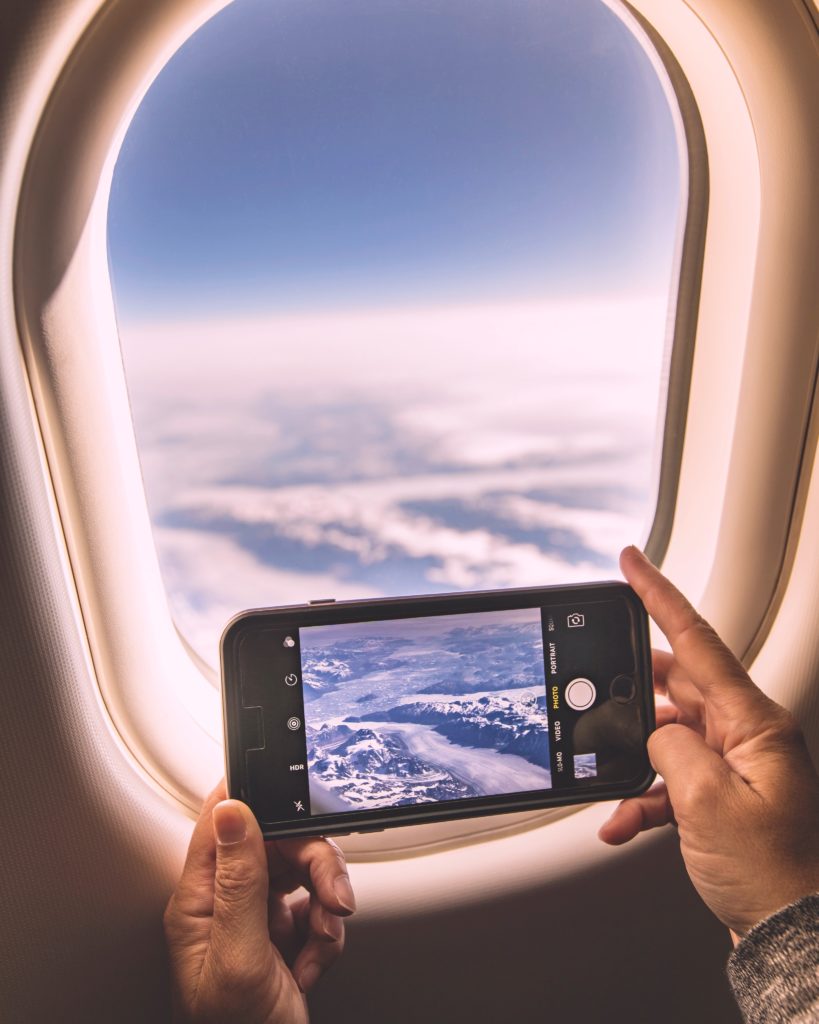Gone are the days when you had to shut down your mobile phones while boarding a flight. Now airlines will ask from their end to use their inflight WiFi services.
😛
Today’s generation is highly reliant on the Internet – be it for business or entertainment.
So, long business tours on flights or family trips accompanying kids would get difficult without any access to the Internet for long hours.
Finally, technology allowed us to access the Internet while flying at thousands of feet above the ground.
This technology was already present with the internal airlines but recently came to India.

Inflight WiFi Working
The main challenge for airplanes to work on ground level antennas was that the high speed of the aircraft.
For instance, a typical jet aircraft travels at a speed of 740-930 kilometers per hour.
So, for this A2G (Air To Ground) Concept is used where grounded towers transmit signals to the traveling aircraft.
👉 Stay Updated On Whatsapp 👈
Daily Technology News, Sales on Gadgets, Informative Blogs & Much More
Phase I – Air To Ground Technology
The aircraft has a transponder in its bottom which receives all the signals and makes sure that the passengers are getting the Internet.
[Also Read: How Police exactly track our location?]
However, there was are many issues with the Air-To-Ground Technology.
- Water Bodies – Since we don’t have towers installed in the ocean and water bodies, we can’t get any connection while flying over the oceans.
- Insufficient Towers – Since the land area is also vast, we cannot install towers everywhere for those fraction of seconds. As a result, planes don’t get signals most of the time.
- Less Speed – Since there are too many passengers on a single plane while traveling at a very high speed, we have low bandwidth. Hence, that does not provide any good Internet speed.
This is where the Satellite Internet comes into play.
Phase II – Ku-Band
Satellite WiFi uses the direct connection of Satellite and airplane with the help of antenna on the fuselage of aircraft.
The antenna supports the Ku band and that is the same technology that we use for Direct-To-Home (D2H) Services at our homes.
Hence, the airplane acts like a giant hotspot and the passengers use the WiFi.
Once again, we use the same concept of 3 satellites here. In case you don’t know about it, I have explained it in the article related to GPS.

[Must Read: How does Google Maps work? GPS working explained]
The aircraft will catch the Internet from the satellite that is closest and best performing at that moment.
However, even this technology has some limits.
- Less Speed – Merely sufficient for you to check emails, post a holiday selfie on Instagram and update your groups on Whatsapp. That’s it.
- Bulky Design – The antenna on the top of the airplane added weight to the existing weight and hence fuel economy would be poor.
This is how it looks on the top of the aircraft.
The only advantage was that the passengers started getting stable Internet even while flying on the oceans.
Phase III – Ka-Band
Ka-band is a band having more bandwidth than Ku-band which makes it faster.
Now, this is the real beast when it comes to in-flight WiFi. You can stream YouTube, Netflix or even download movies using this bandwidth.
This is the same band that is used in 5G spectrums.
As a result, all the challenges of 5G will be clearly visible here. I have already explained the challenges in our post and I’d recommend you read that for a detailed explanation.
[Must Read: 5G in India | Why is it Impractical in India?]
However, I am giving a summary. The slightest weather issues like rains or bad weather will affect the WiFi.
But that should not worry you because these conditions are rare and the benefits are much more.
Airlines Offering In-flight Internet
After a long wait, India’s Civil Aviation Authority has finally given a green signal to the Airlines for coming up with inflight Internet services.
So, Vistara’s 787-9 Dreamliner will be the first Airline to offer Inflight WiFi in India.
Other countries have already implemented this technology in their International Airlines.

How many of the Airline companies did you know? 😉
Let’s hope more Indian Airlines come up with this technology in the upcoming years.
Although, the condition of the airline industry is facing several losses and this technology is expensive.
P2

This is an excellent information for people who loves to have internet connection during their travelling time.
Here is another good news for us web surfer/casual flyers, however, is that more often than not, these lounges offer Free WiFi access! Thanks to the wireless technology, the WiFi signal easily penetrates the walls of these lounges. I have to confess that I have logged on to these airport lounge hotspots to gain free Internet access at the airport many times.
How was the speed and Internet you got at the Airport lounge?
Thanks for your reply Priteshpawar. Actually i am using wificoin for last few months and i am getting really a good performance from this apps. Specially it is worth the money always when i am so far from the ground. 🙂
Great internet site! It looks very good! Keep up the great job!
Thanks